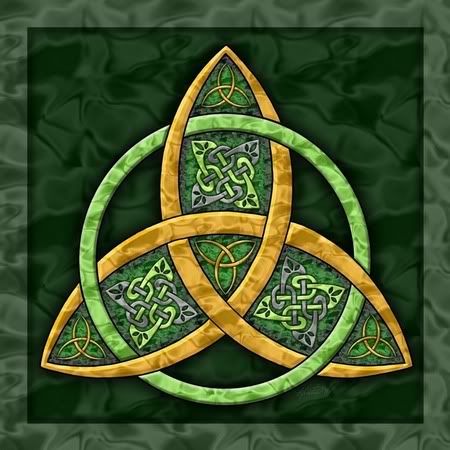 In the past decade or two, there has been an amazing spread of Celtic identity throughout the world. Celtic festivals are common all over Western Europe, North America, Australia, etc. We now have the Celtic League, the International Celtic Congress, and a major international Celtic festival (which was held in Valle d'Aosta in 2009). The question is: where do we fit into this Pan-Celtic milieu?
In the past decade or two, there has been an amazing spread of Celtic identity throughout the world. Celtic festivals are common all over Western Europe, North America, Australia, etc. We now have the Celtic League, the International Celtic Congress, and a major international Celtic festival (which was held in Valle d'Aosta in 2009). The question is: where do we fit into this Pan-Celtic milieu?
We would have to fit in somewhere, as much of the spirituality and even the Celtic knotwork is tied to Padania. "Cisalpine Gaul," of course, was the name given to Padania by the Romans, which means in Latin: "Gaul south of the Alps." The Trophy of Augustus was the Roman trophy to the conquest of the Celto-Ligurian tribes.
One interesting commonality of the Celtic peoples throughout history is their struggle against encroaching Teutonic and Roman armies. In the movie 'Braveheart', Celtic Scots are depicted defending their homeland against basically Anglo-Saxon/Norman English. The Roman Julius Caesar conquered Celtic Gaul. These are just two of the more well-known examples. Many compare the Roman invasion of Cisalpine Gaul to the invasion of the English against the Scots.
Unlike many other European cultures, Padania doesn't have the definitive "one ancient culture" that it can draw most of it's inspiration from. Lega Nord chose the Celts. The Etruscans were too tied into Roman (Italian) identity, and the Langobards were invaders from somewhere else. At least some of this was based on political reasoning. We do not have the answer to this equation yet.
Actually, Cisalpine Gaul was demographically "Celto-Ligurian," as we have covered before. That is, a mix of both proto-Alpine and Celtic tribes. The Trophy of Augustus lists both Alpine and Celtic tribes.
The Pan-Celtic identity is such a good fit, as we are not really southern or northern European, and not Eastern European. Quite frankly, the region of Padania is/was historically located at the crossroads of Roman/Mediterranean (south), Germanic/Norse (north), Celtic/Gaulic (west) and Slavic (east) worlds. In viewing the greater scope of things, in both ancient and modern concepts, we're more Western European. Like the French, we're basically Romanized Gauls.

No comments:
Post a Comment